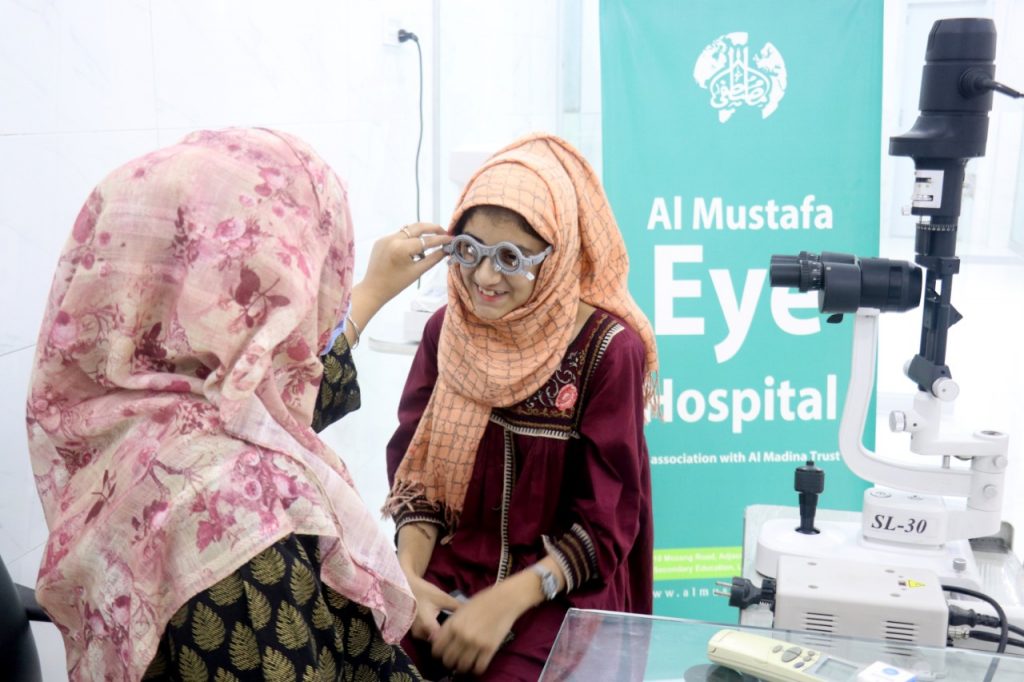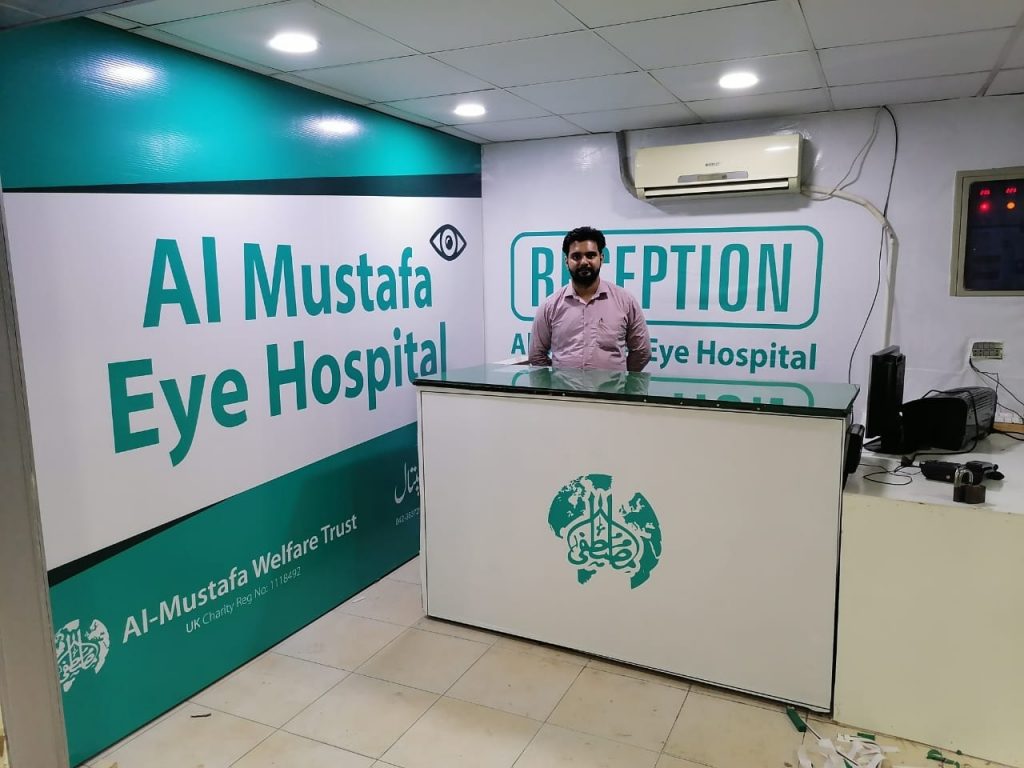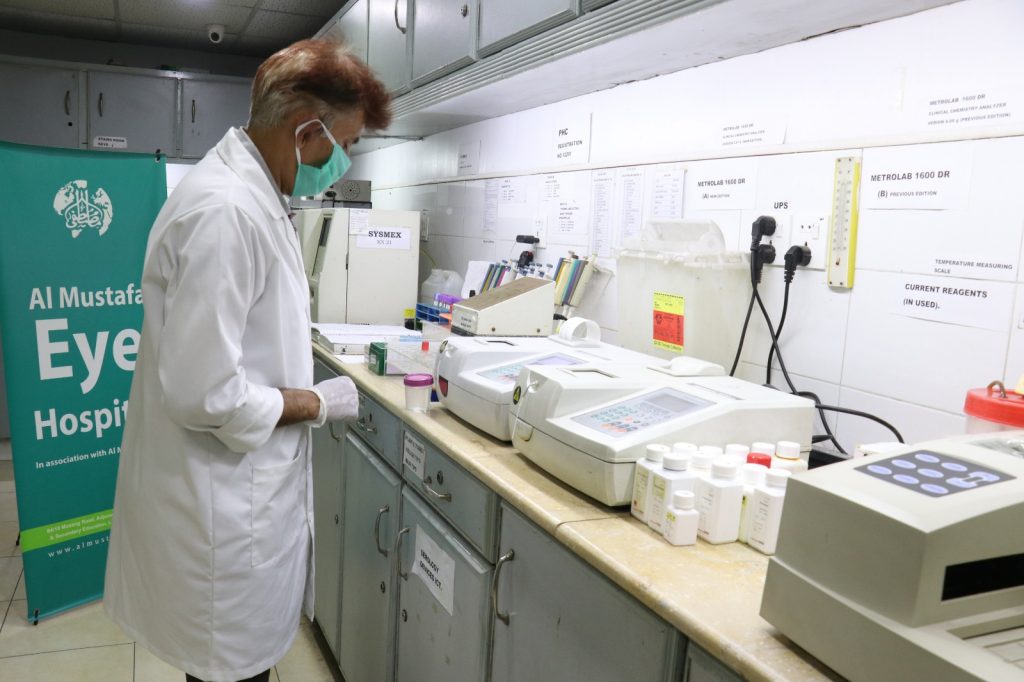Wajahat Ali Khan
AL Mustafa Welfare Trust is a charitable organisation, and its head office is based in London, UK. Its eye hospital is established in Lahore, their claim is that the organization has been completely free of cataract surgery for the past three years. The hospital management says that every cataract patient who comes to us is also tested for hepatitis, diabetes and blood before the operation which is also free. I am also an eyewitness of many of Al Mustafa’s public service works that this organization is performing in different countries of the world. For example, in Pakistan Khabar to Karachi including Azad Kashmir, organization runs hundreds of campuses where every human being, regardless of race, ethnicity or financial status is heled in every way possible. Similarly, when a patient visiting “Al Mustafa Eye Hospital” in Mozang Road Lahore Pakistan, he/she is not required to provide or get a proof from their area Counsellor or your “Village’s Chaudhary” stating that they are indeed eligible for free treatment. Therefore, the self-determination of all of them is also considered!

Al-Mustafa Welfare Trust is also dedicated to eradicating global poverty, and for over 30 years has been delivering life-saving humanitarian aid to the poorest countries in the world. We transform the lives of millions of people in need daily. With a specialist in healthcare & sight restoration, we have been one of the first to run free medical eye camps in Pakistan serving remote, impoverished communities across the country. However, over the last decades, our sight restoration programme has expanded across Asia, Africa & the Middle East – giving the gift of sight to over 150,000 people in need, and they plan to increase that figure to more than 200.00 this year. What is cataract, why and when it occurs, what is the treatment for this problem and what are the guidelines which Al Mustafa eye hospital follows, here is the description for “Aims” readers.

Cataracts are the clouding of the lens of your eye, which is normally clear. Most cataracts develop slowly over time, causing symptoms such as blurry vision. Cataracts can be surgically removed through an outpatient procedure that restores vision in nearly everyone. What is a cataract?
A cataract develops when the lens in your eye, which is normally clear, becomes foggy.
For your eye to see, light passes through a clear lens. The lens is behind your iris (coloured part of your eye). The lens focuses the light so that your brain and eye can work together to process information into a picture.
When a cataract clouds over the lens, your eye can’t focus light on the same way. This leads to blurry vision or other vision loss (trouble seeing). Your vision change depends on the cataract’s location and size.
Who gets cataracts?

Most people start getting cataracts around age 40. But you probably won’t notice symptoms until after age 60. Rarely, babies are born with cataracts due to a birth defect.
You’re more likely to develop cataracts if you:
Smoke cigarettes.
Live in an area with bad air pollution.
Use alcohol heavily.
Have a family history of cataracts.
How common are cataracts?
Cataracts are common among older people. More than 50% of people aged 80 and older have had cataracts.
Can you get cataracts in both eyes?
You can get cataracts in both eyes. But one eye may be worse than the other or develop later.
What causes a cataract?
The lens of your eye is mostly water and proteins. As proteins break down over time, they hang around in your eye. These lingering proteins can make your lens cloudy, so it’s hard to see clearly. This is a typical — though unpleasant — part of aging.
Some things can speed up the formation of cataracts, such as:
Diabetes.
Steroids, common medications to treat conditions like arthritis and lupus.
Phenothiazine drugs such as chlorpromazine (Thorazine®), used to treat a variety of conditions such as schizophrenia and bipolar disorder.
Eye surgery or eye injuries.
Radiation treatment to your upper body.
Spending a lot of time in the sun without eye protection, like sunglasses.
What are the symptoms of a cataract?
Cataracts are a common part of the eye’s aging process. Eventually, they can cause:
Vision that’s cloudy, blurry, foggy or filmy.
Sensitivity to bright sunlight, lamps or headlights.
Glare (seeing a halo around lights), especially when you drive at night with oncoming headlights.
Prescription changes in glasses, including sudden near-sightedness.
Double vision.
Need for brighter light to read.
Difficulty seeing at night (poor night vision).
Changes in the way you see colour.
Are cataracts painful?
Cataracts don’t usually hurt. But they can cause discomfort by making your eyes more sensitive to light.
How is a cataract diagnosed?
If you have cataract symptoms, see an eye doctor (ophthalmologist) for a complete exam. The doctor will need to dilate your pupil to see inside your eye. During this test, special eye drops widen your pupil (the black part of the eye). When the pupil is wide open, your doctor checks the health of your eye. Your doctor can see if you have cataracts or other problems and find out how much of your vision is blocked.
How is a cataract treated?
If your cataract symptoms are mild, you might just need a new prescription for glasses or contacts. Cataracts usually worsen over time, though. Eventually, your doctor will likely recommend surgery to remove the cataract.
At what stage should cataracts be removed?
Most people wait until a cataract causes enough vision loss to be a problem, like making it hard to read or drive. Sometimes people need cataract surgery to see and treat other eye conditions, such as age-related changes in the retina (tissue at the back of the eye) or diabetic retinopathy.
Who removes cataracts?
An ophthalmologist (doctor who specializes in eye health) performs cataract removal surgery.
How are cataracts removed?
During cataract surgery, the surgeon removes the clouded lens and replaces it with an artificial lens implant. The new lens is clear, shaped to fit your eye and personalized to your vision needs.
Cataract removal takes about an hour. It’s done with local anaesthesia (medication to numb a specific area). Your doctor will use eye drops or a shot to numb your eye. You’ll be awake, but you won’t feel or see the procedure.
What are the different types of cataract surgery?
Phacoemulsification cataract surgery
Phacoemulsification is the most common procedure for cataracts. Your ophthalmologist makes a small opening in the eye to reach the clouded lens. Using high-frequency sound waves (ultrasound) or a laser, your ophthalmologist breaks the lens into pieces. Then the doctor suctions lens fragments from your eye and puts in a new plastic lens.
Extracapsular cataract surgery
Your doctor might recommend this procedure if the phacoemulsification technique isn’t a good option for you. For example, an advanced cataract might be too dense to break apart easily.
In extracapsular cataract surgery, your ophthalmologist makes a larger opening in the eye. Instead of breaking up the lens and then removing it, your doctor removes the lens in one piece. Then the surgeon inserts the manufactured lens.
What can I expect after surgery?
Itching.
Mild discomfort.
Watery eye.
Sensitivity to light.
Blurry vision.
For a few weeks after surgery, you may need to use eye drops. The drops help you heal, prevent infection and control the pressure inside your eye. During those weeks you’ll also want to avoid:
Touching your eyes.
Bending over.
Lifting heavy things.
Doing anything that risks injuring your eye.
How much time does it take to recover from cataract surgery?
Your eye should heal within eight weeks. But you can go about your daily activities as soon as a day after the surgery.
Is cataract surgery safe?
Cataract surgery is one of the safest and most frequently performed surgeries in the U.S. The chance of any complications is extremely low. But you should always discuss the risks of any surgery with your doctor. Some people do have an infection or vision loss after the procedure.
How painful is cataract surgery?
You shouldn’t feel anything during the cataract removal surgery. Afterward, you may have mild pain and discomfort. Your doctor can give you a pain reliever to use for the first day or two.
Can cataracts be prevented?
Developing cataracts is a typical part of aging. You can take a few steps to protect your eye health and slow the process:
Quit smoking.
Wear sunglasses and a hat with a brim to keep sun out of your eyes.
Get regular eye care. Have your eyes dilated once every two years after age 60. Surgery may be easier if you get treated sooner.







